Posts in Category: Raptors
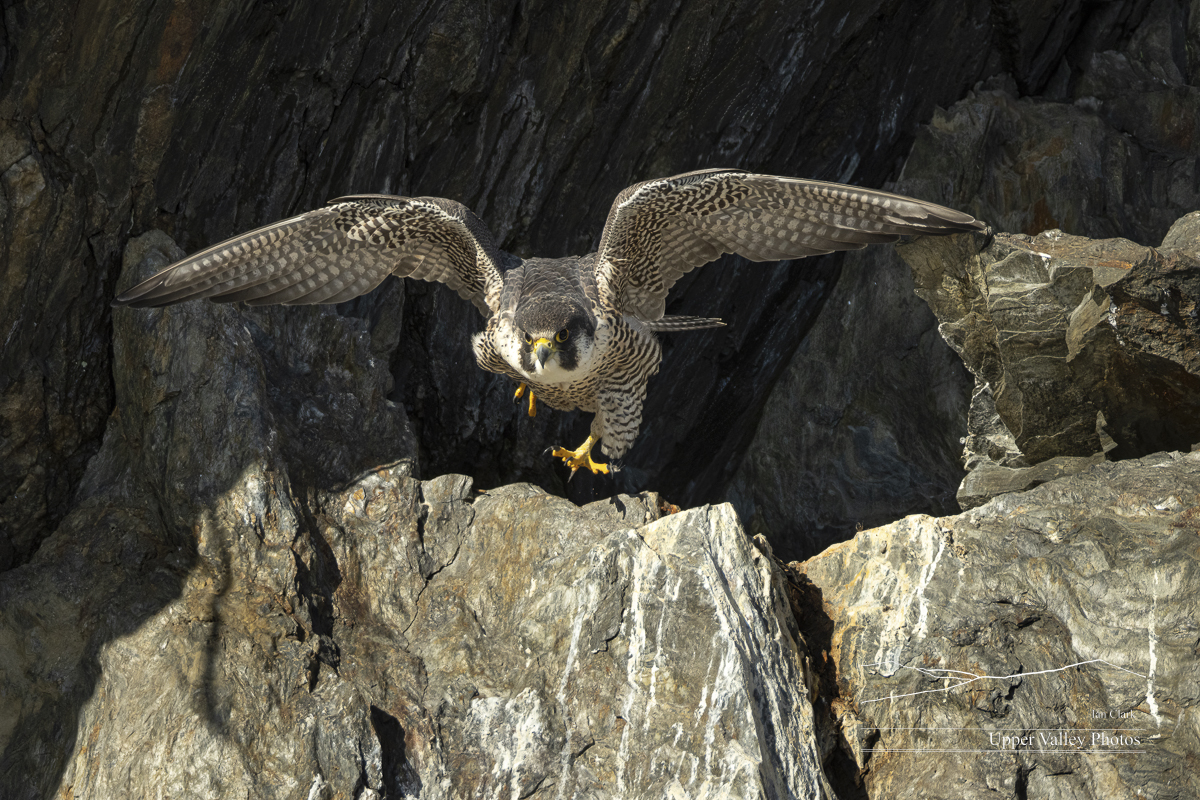
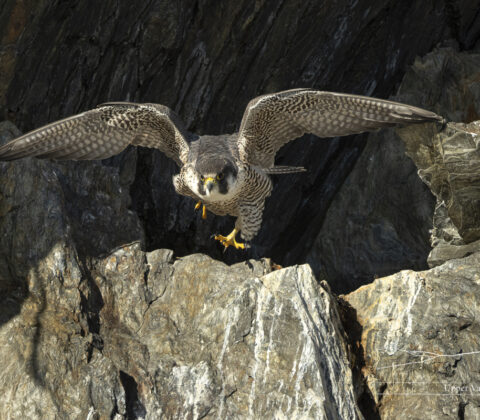
Peregrine Falcons Have Returned
Peregrine falcons have returned to Vermont and are getting ready to nest. I was able to visit a pair in Caledonia County this morning. They spent some time seemingly discussing their nest site, with one promoting last year’s site, the other agitating for a ledge a couple dozen yards to the north. They interrupted the discussion to head out for a flying courtship display. Unfortunately, the display was out of camera range.
Peregrines were extirpated (locally extinct) in Vermont after the introduction of DDT. The state started a recovery effort in 1975 and the population is increasing again. The last year I could find figures for was 2022, when there were an estimated 60 pairs nesting in Vermont.
Peregrines are thought to be the fastest animal on earth. They can dive in flight. Estimates online range from 200 to 240 mph, without my finding anyone who claims to have actually clocked a flying falcon. But, seeing one dive is indeed impressive and the estimates are believable.

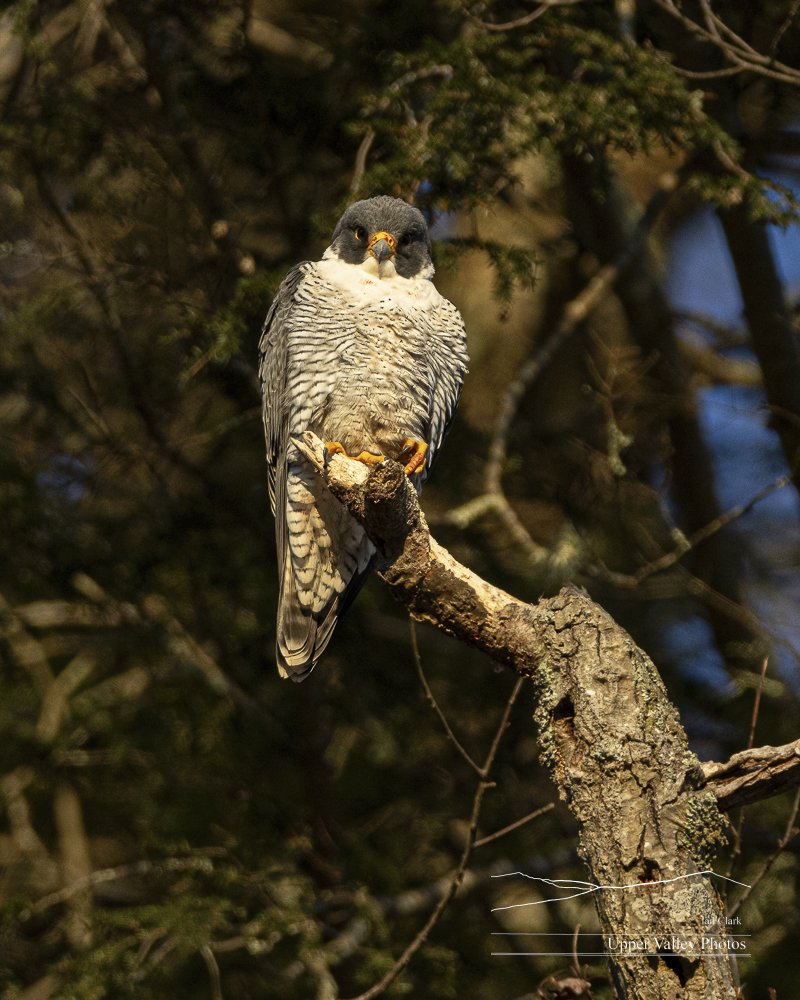

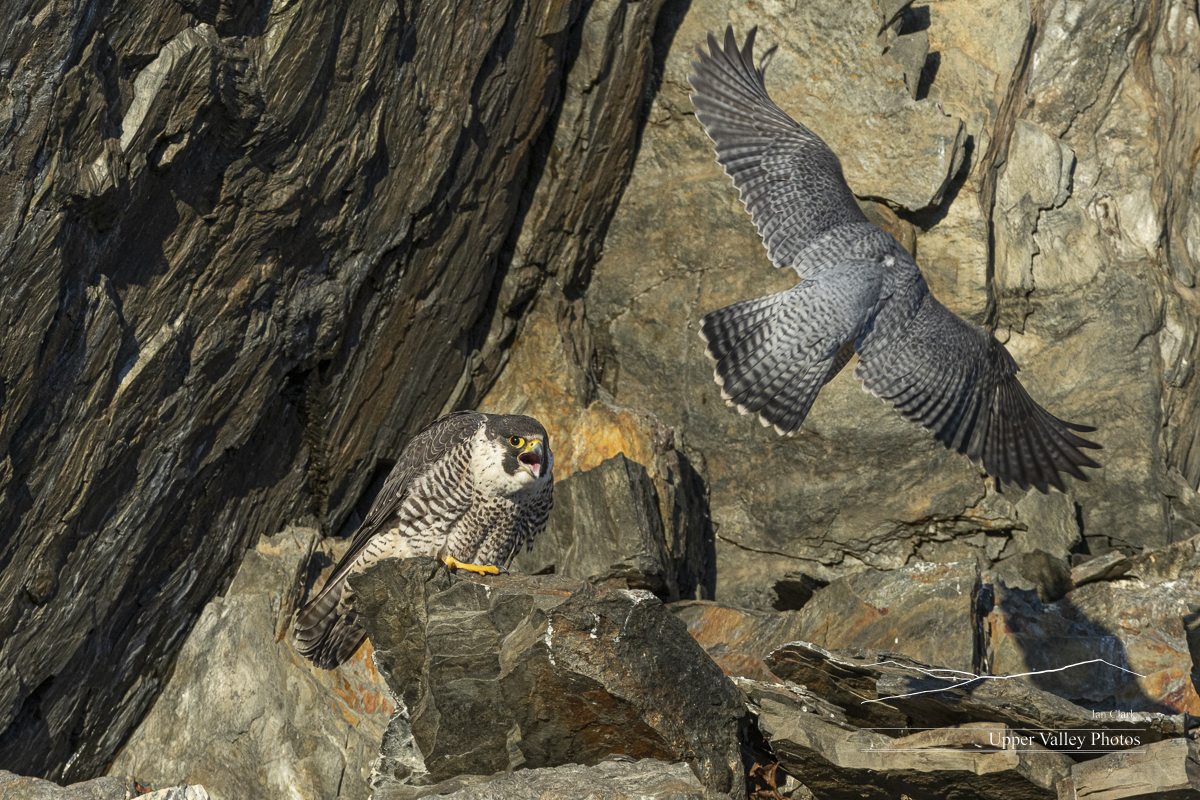
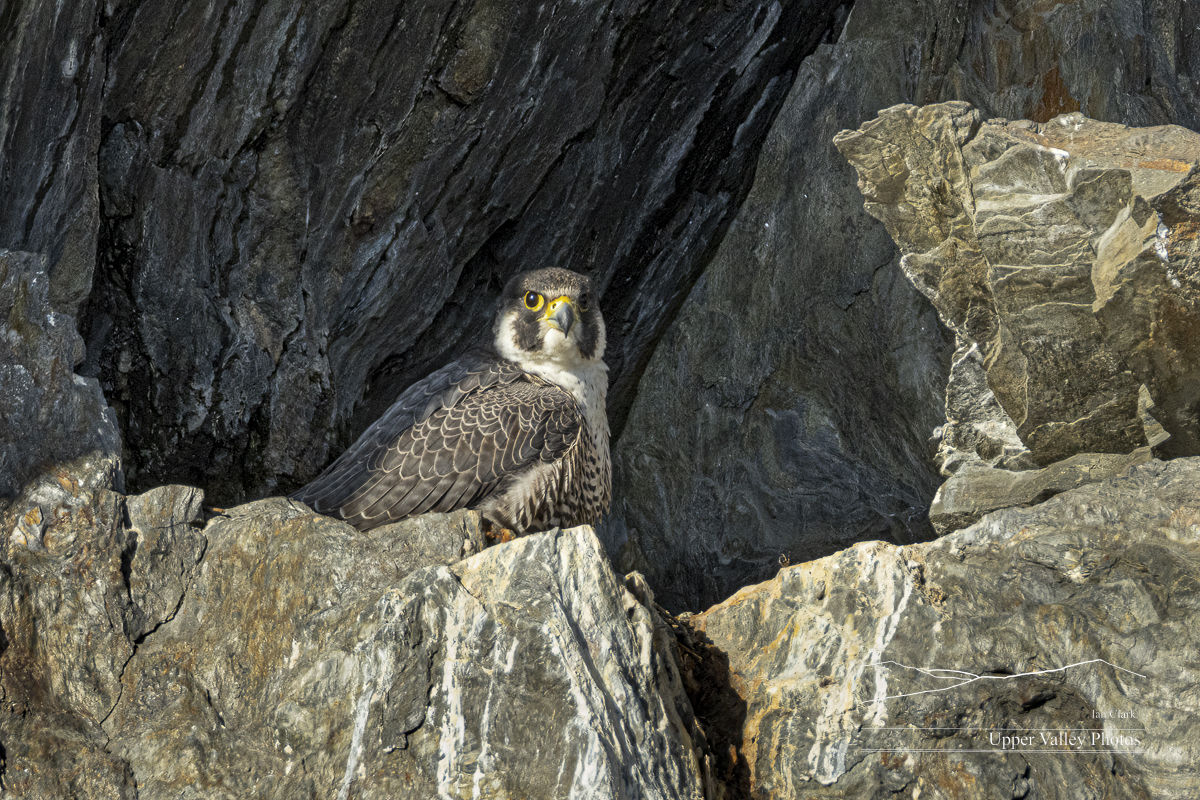
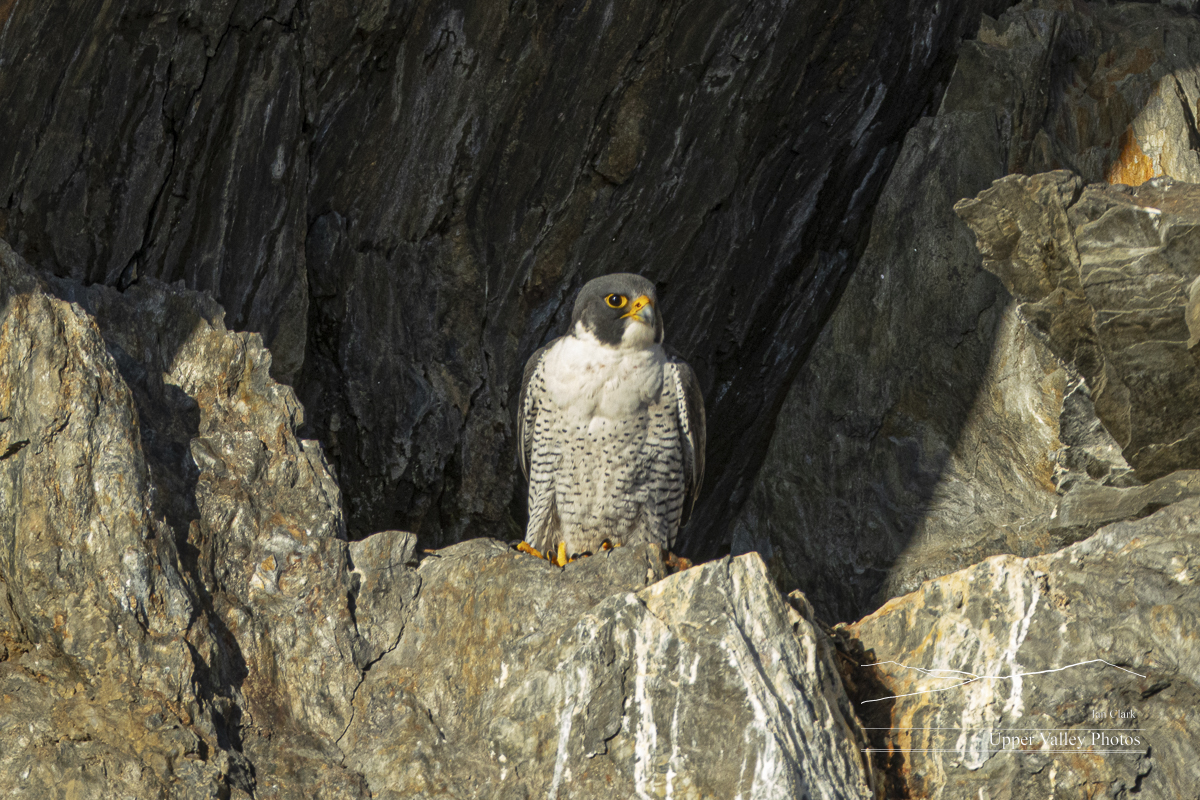

Unexpected Action on the Middleton’s Pond
The forecast for this morning called for rain. I happily planned to sleep in. Owing two huskies often thwarts such plans. When I let them out, there were stars to be seen. There was a thick fog over the Connecticut River, but clear skies above. The Middleton’s – the loons that live on the pond between the other two ponds – pond is a few hundred feet above the Connecticut. Hoping for some mood shots, I packed up and headed out.

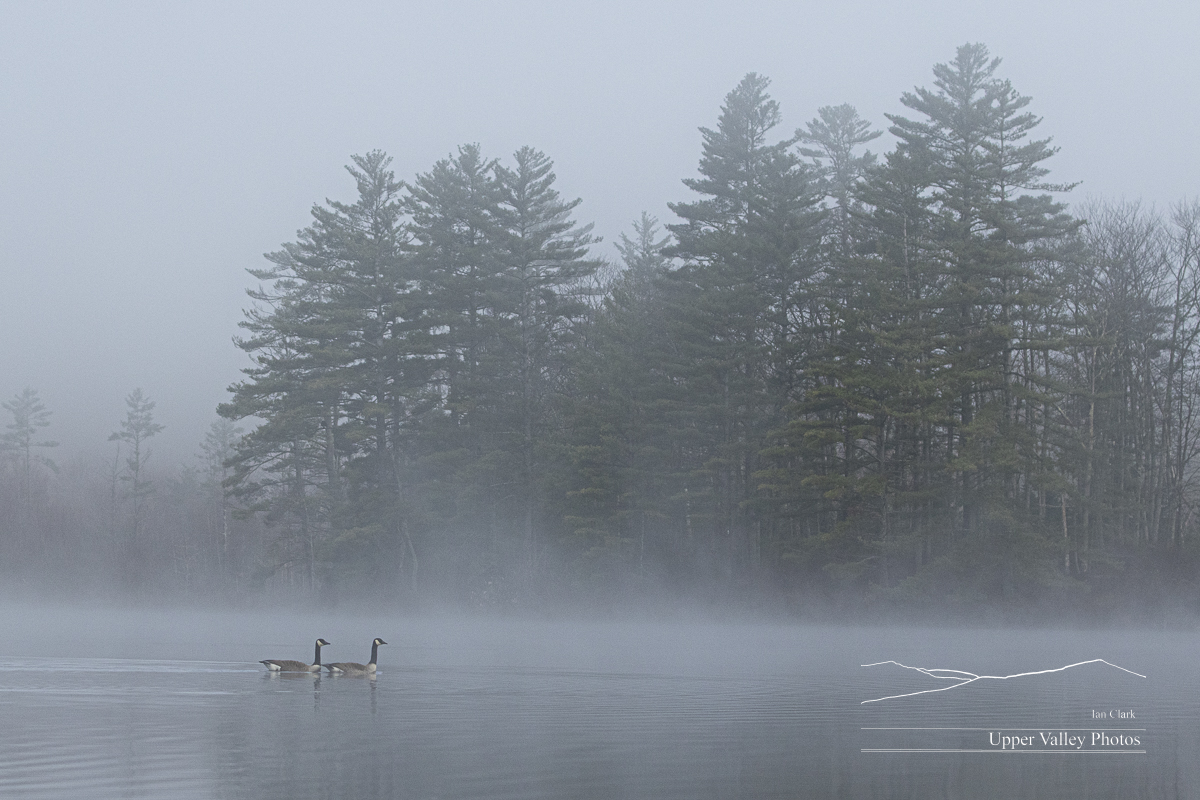
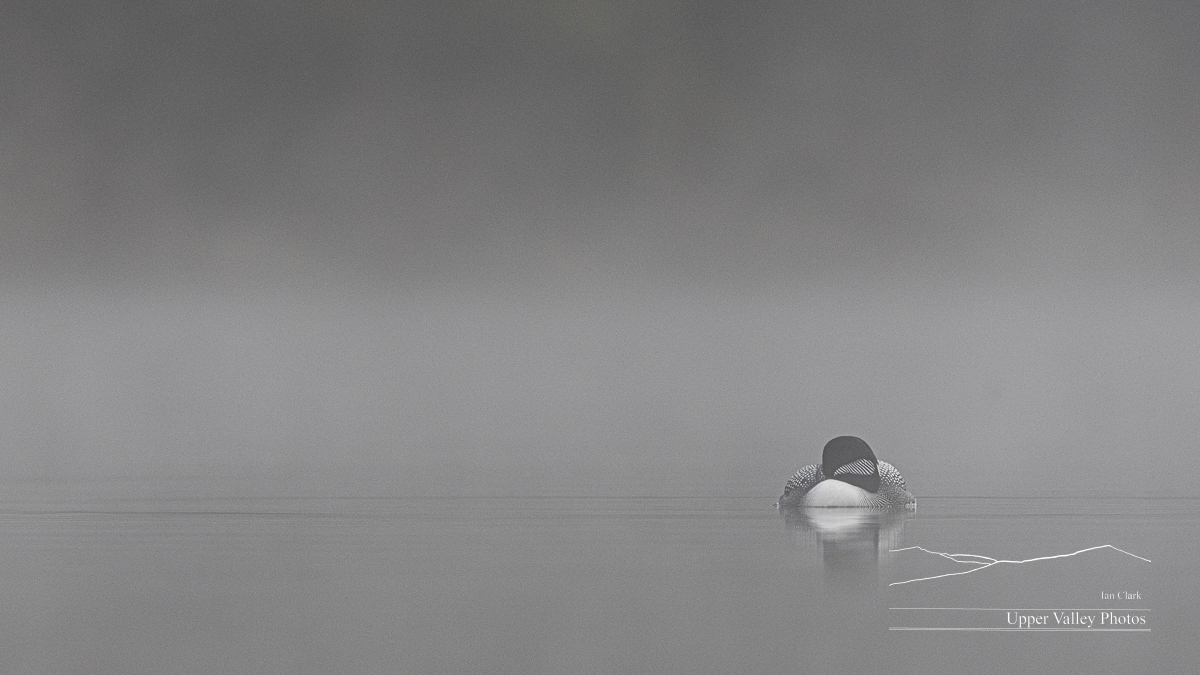
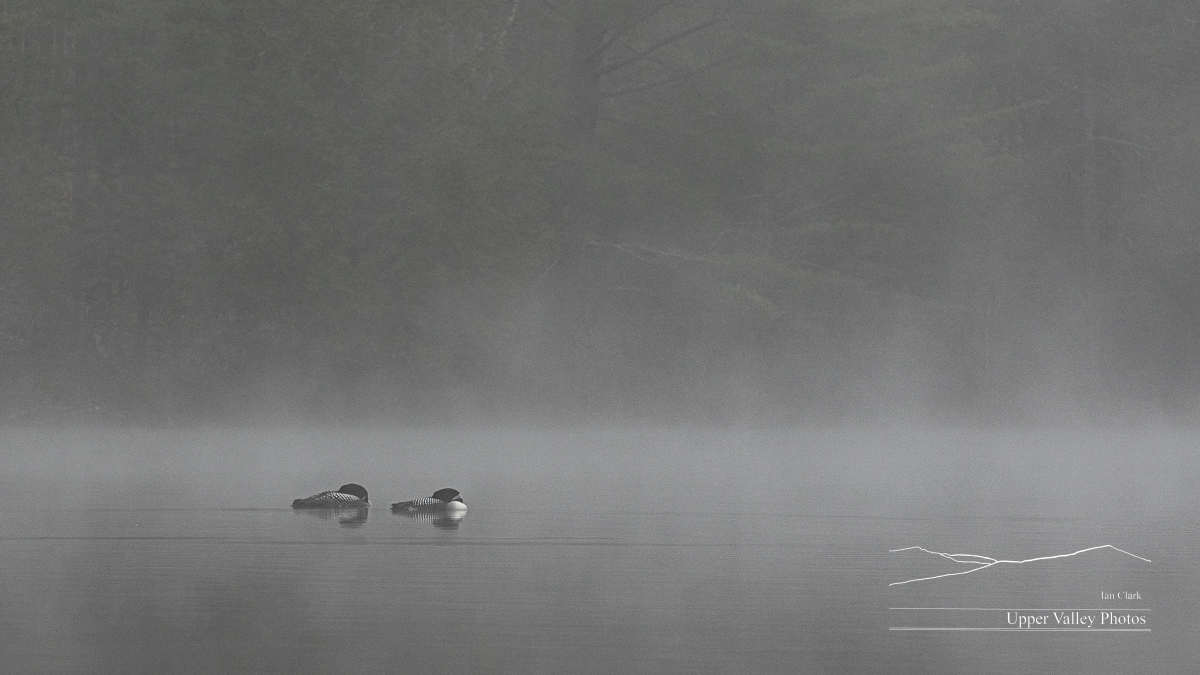
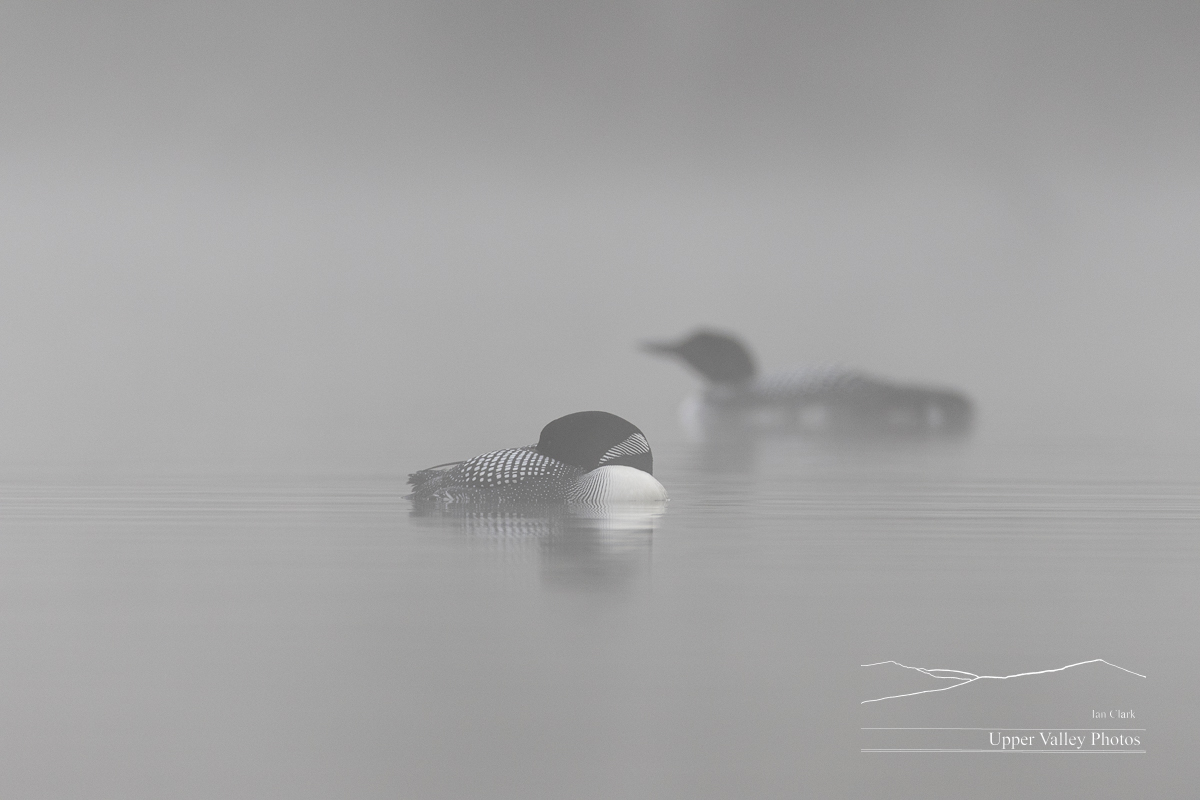
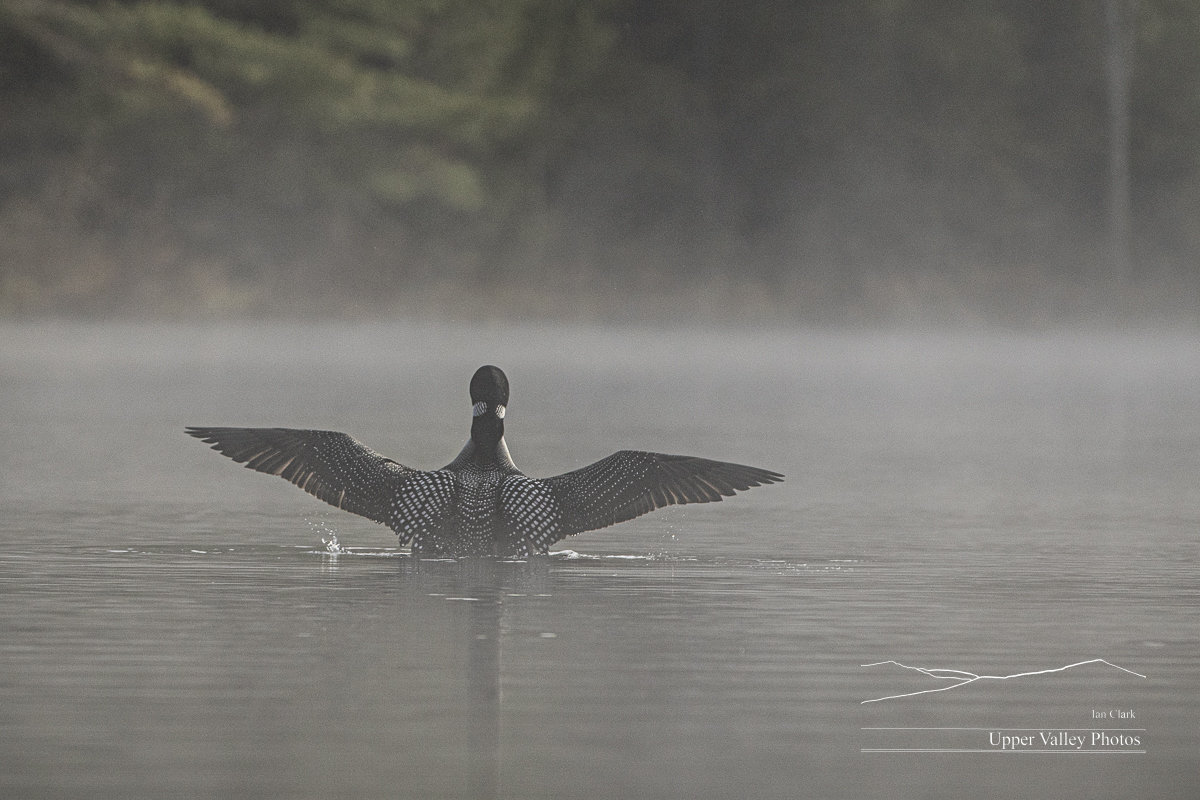
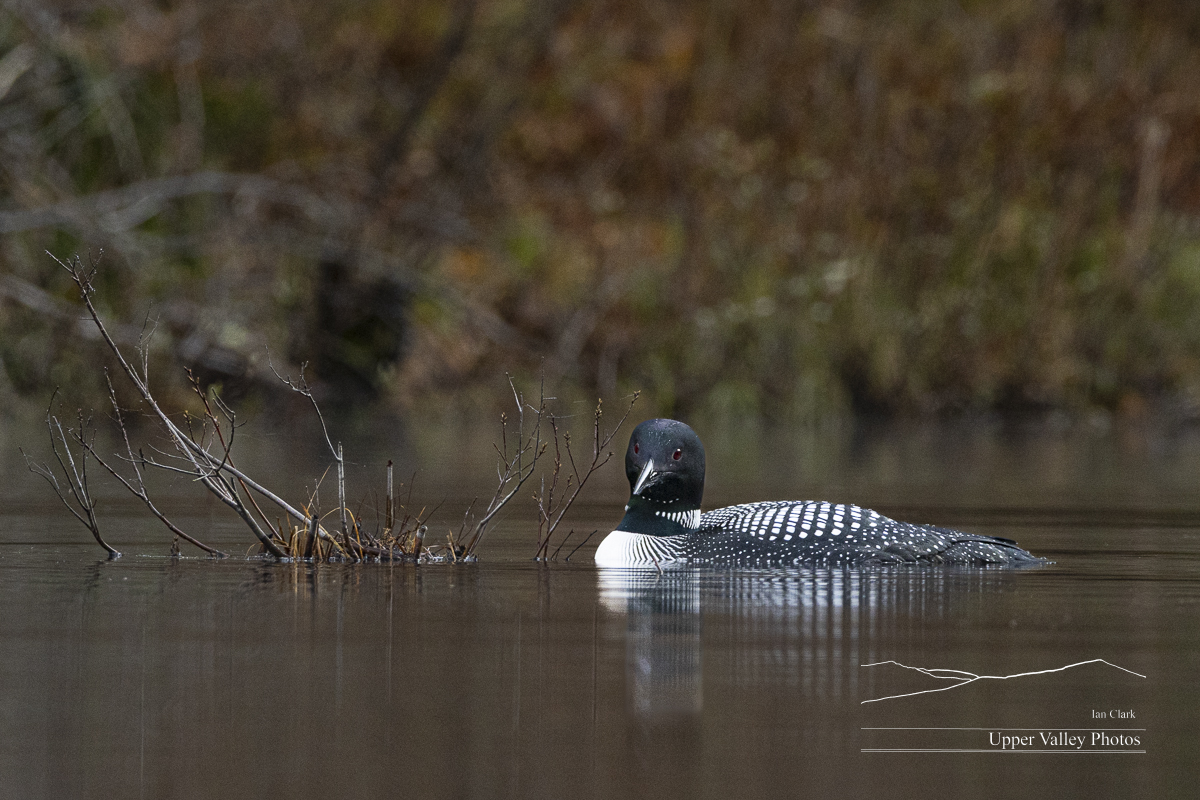
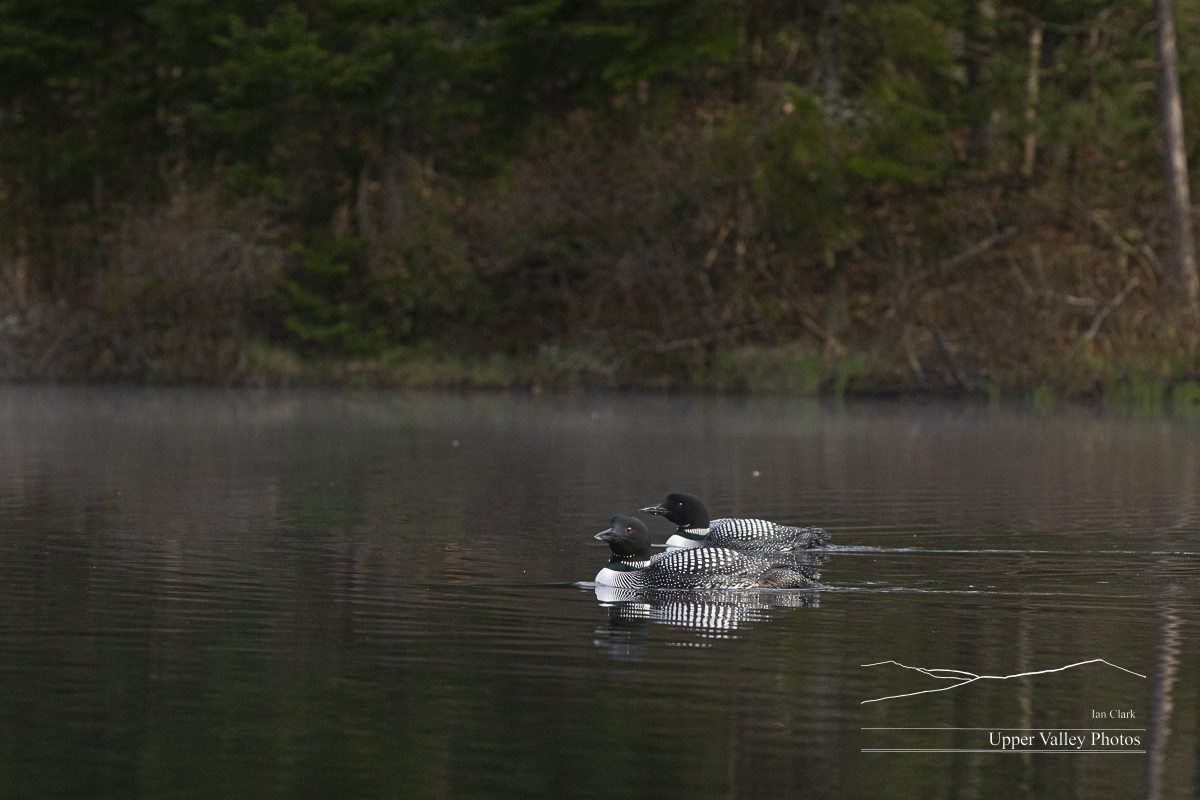
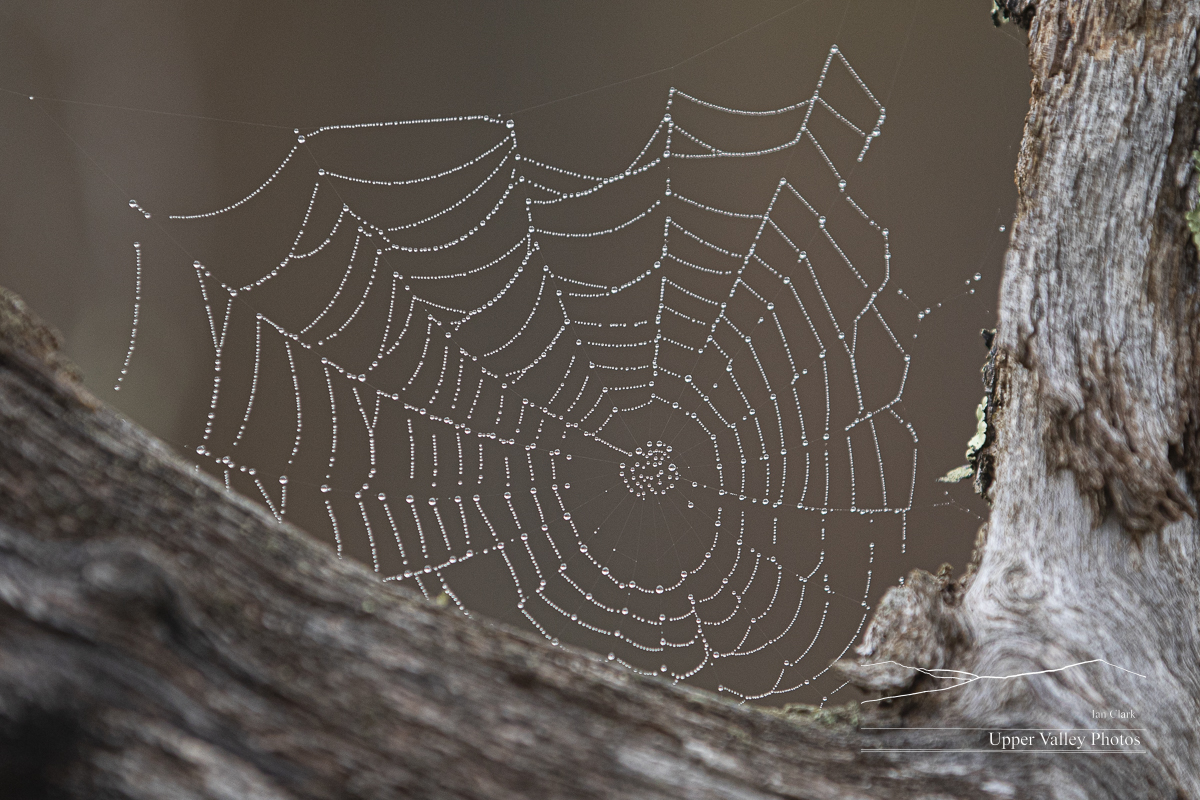

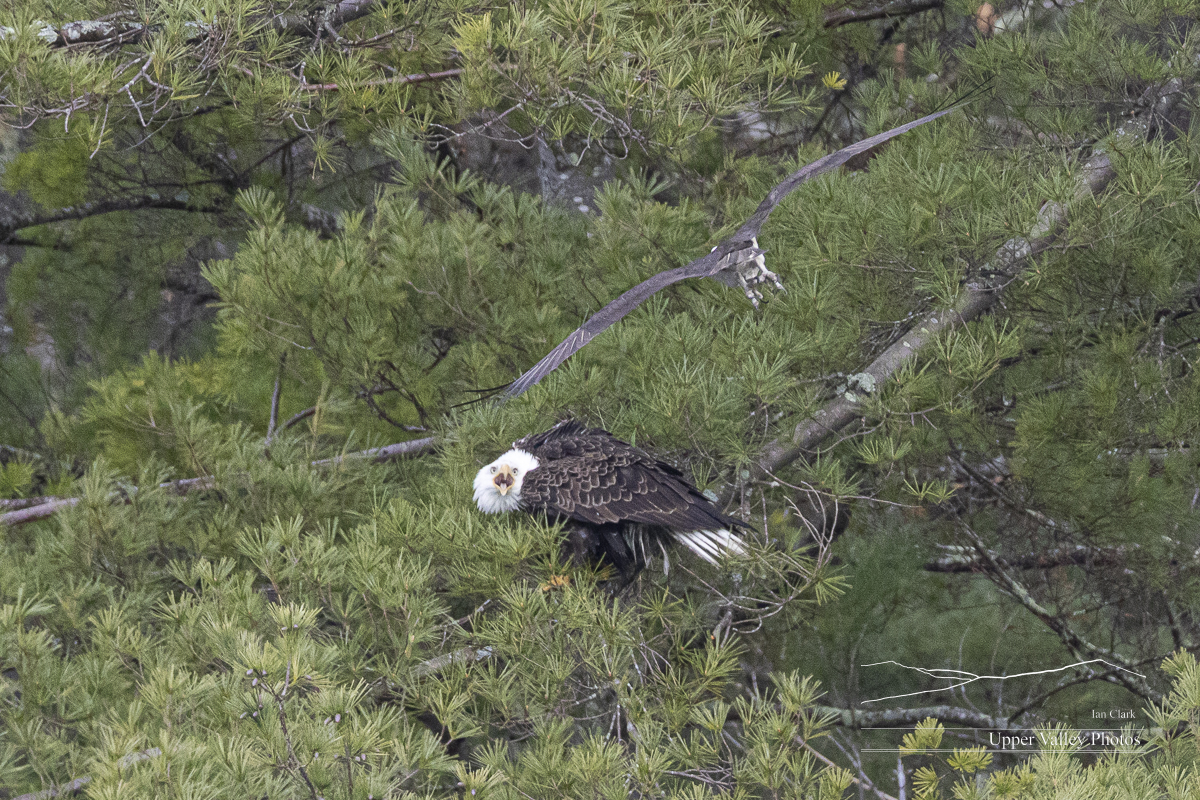
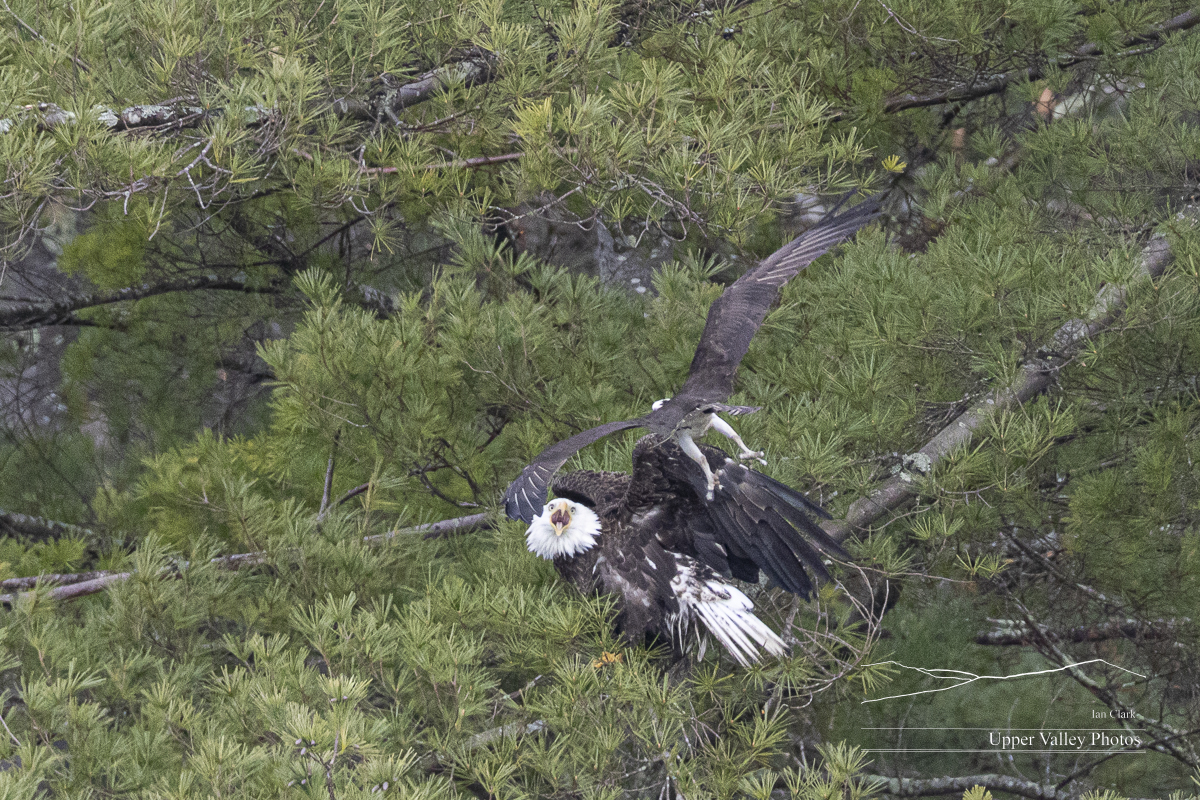
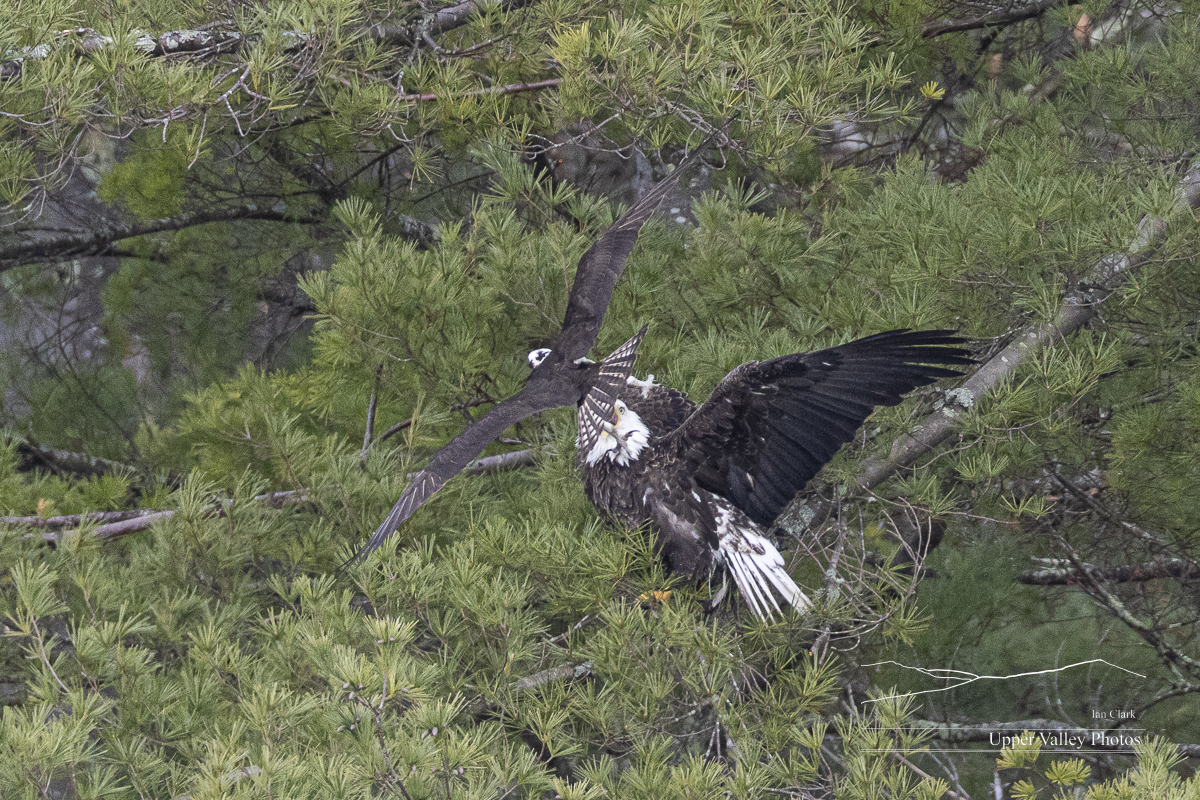
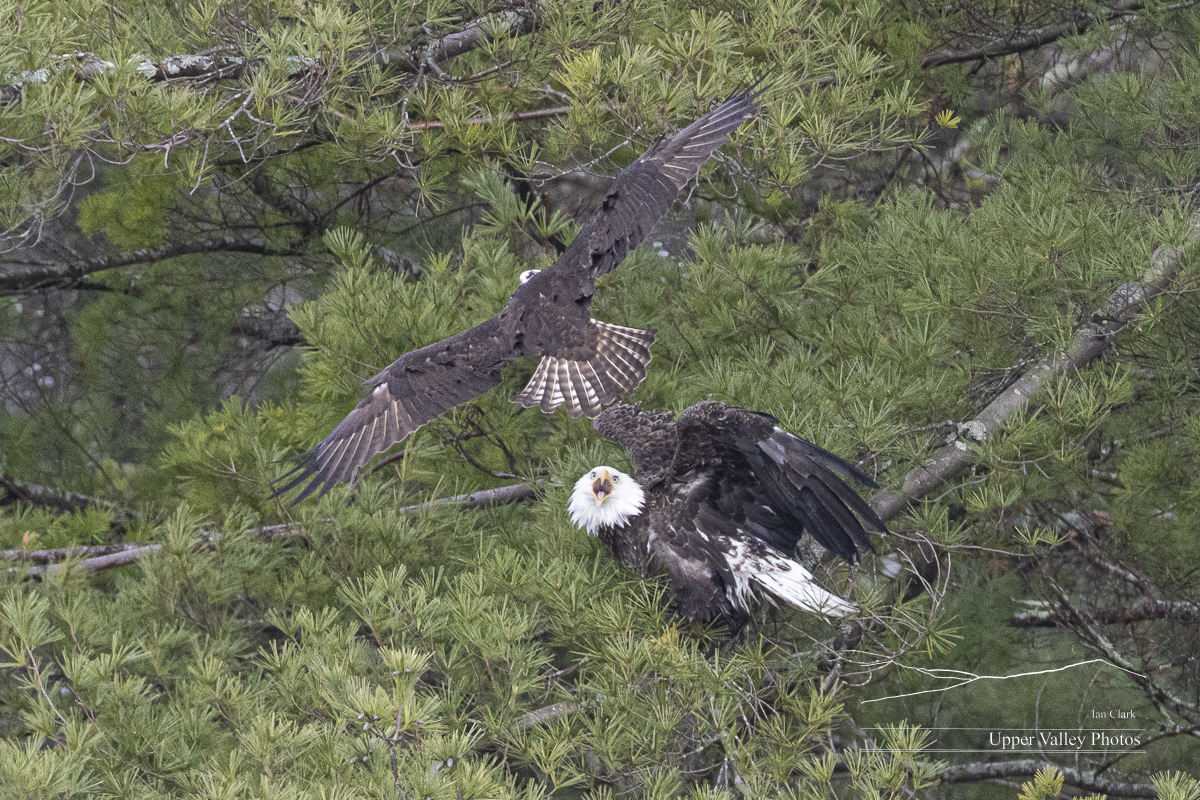

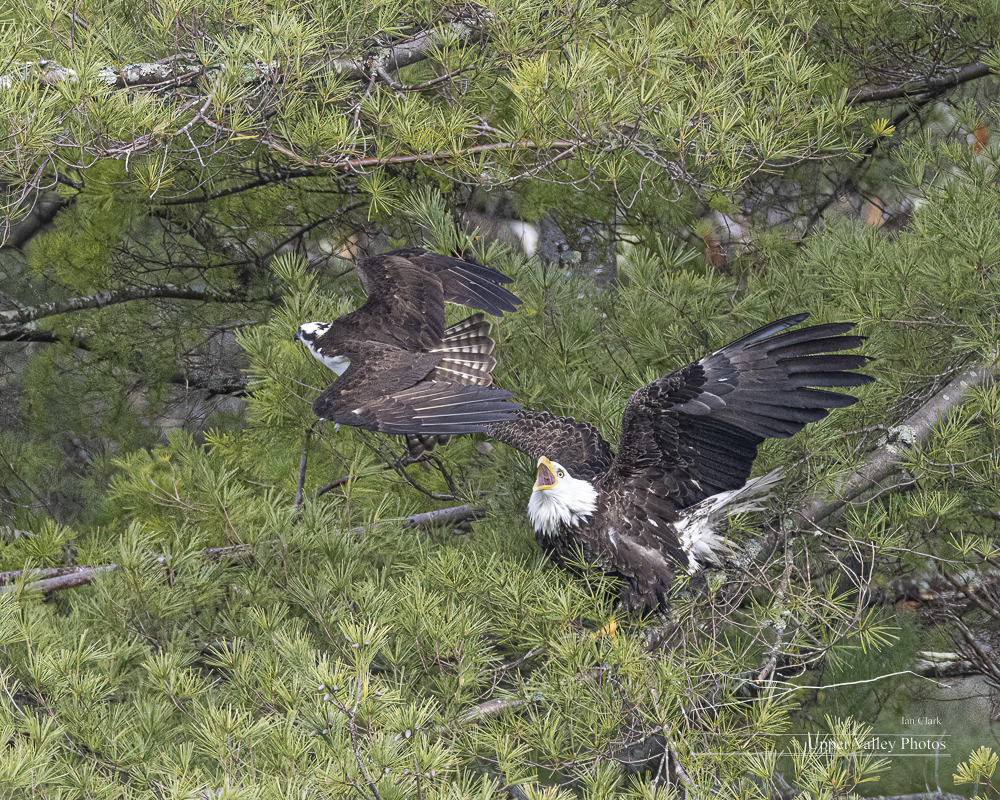
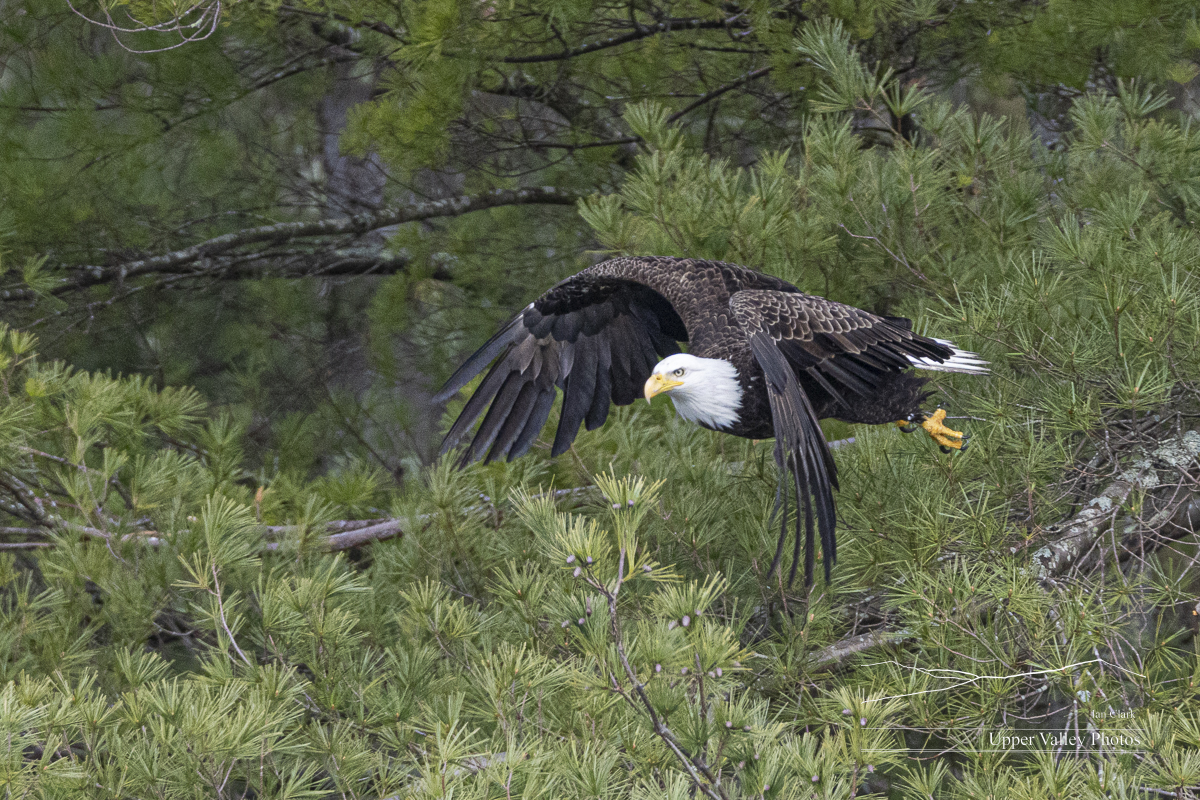
The loons would be rooting for the osprey. Osprey’s diet is almost exclusively fish, they leave the loons alone, while eagles are a very real threat to loon families.
My luck with the weather ran out. A few raindrops remined me that the huskies needed their morning run. I had the boat packed up and was pulling out of the parking spot when the rain hit. The huskies enjoyed romping in the mud when they got their run.
